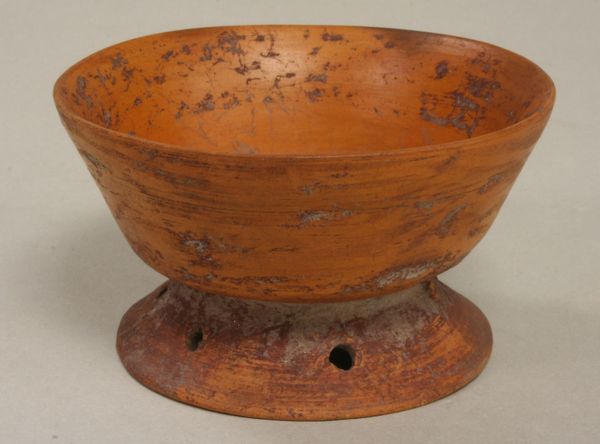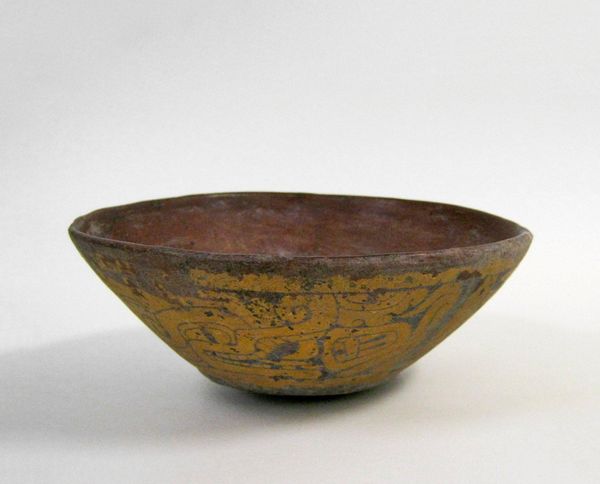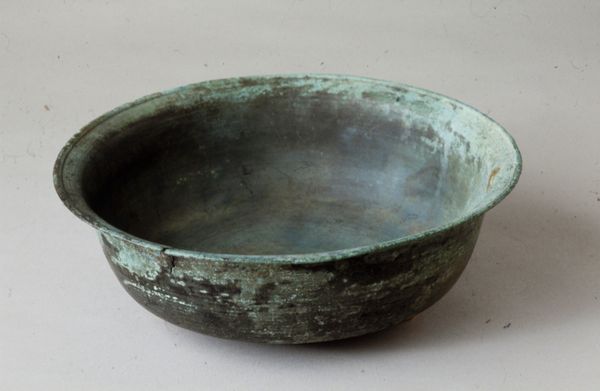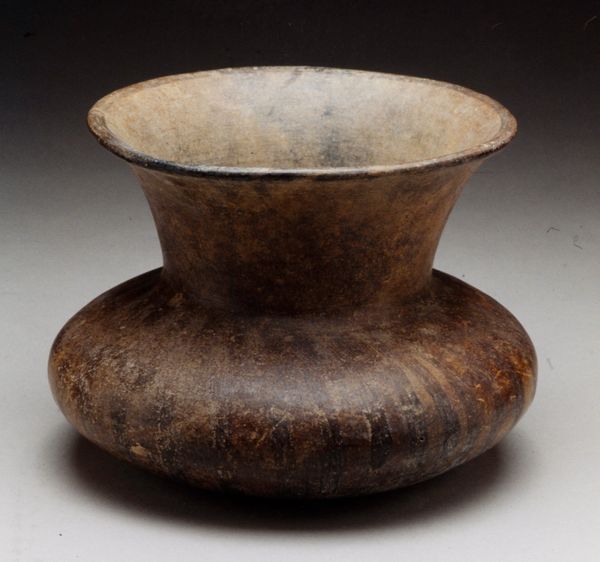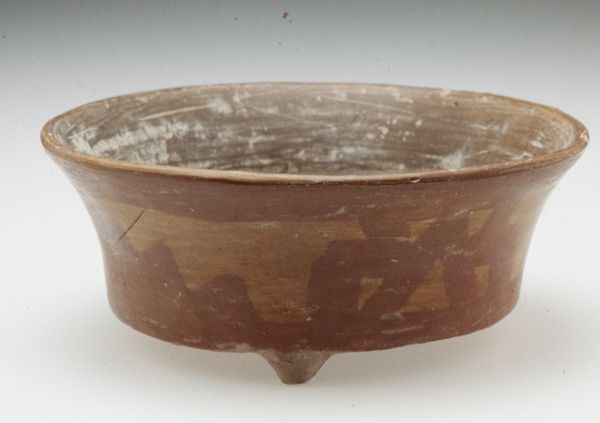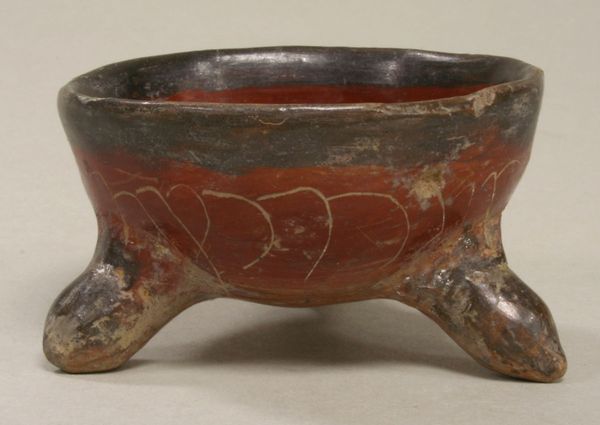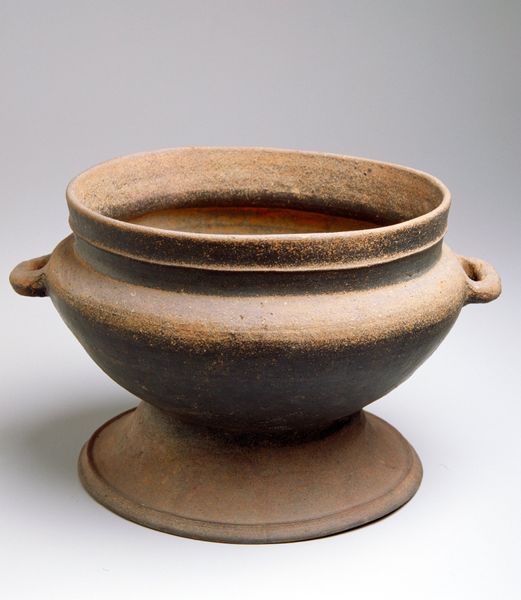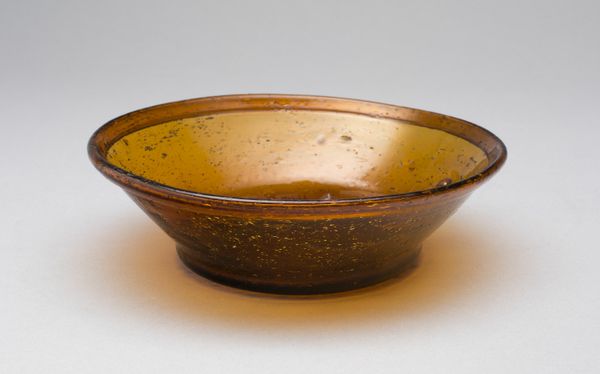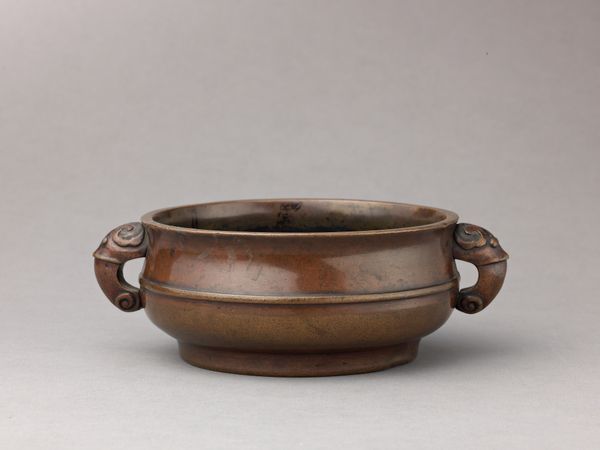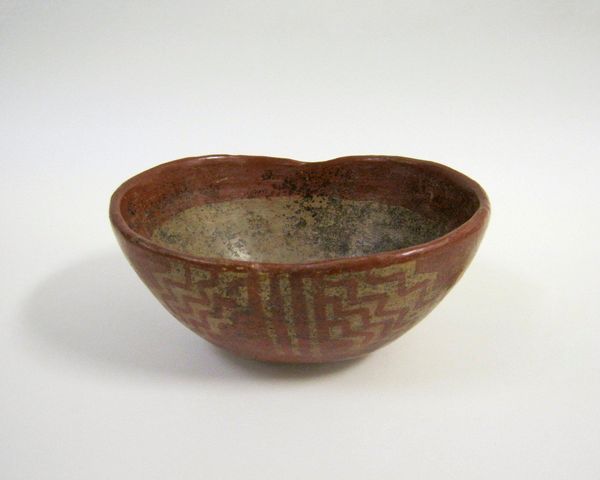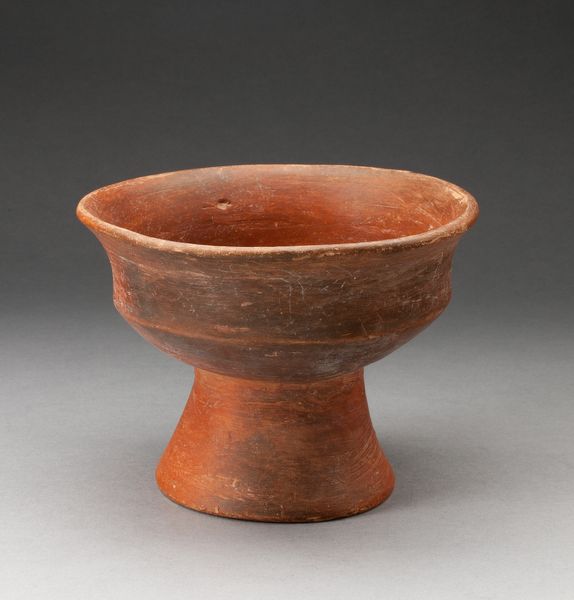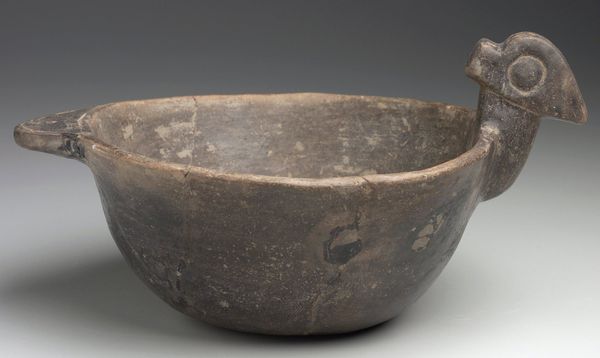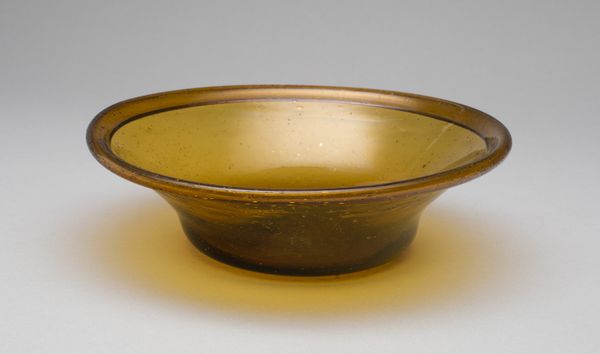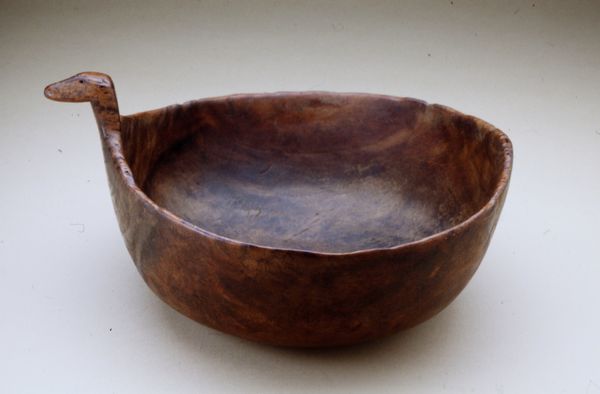
ceramic, earthenware, terracotta
#
ceramic
#
earthenware
#
terracotta
#
indigenous-americas
Copyright: Public domain
Curator: Let's turn our attention to this "Miniature Pedestal Bowl" from the Met's collection of Aztec Art. What catches your eye? Editor: Immediately, the materiality strikes me. The raw, earthen texture and the warm, muted color palette speak of simplicity, of a directness of process, perhaps even pre-industrial techniques. Curator: Absolutely. Context is key here. The term Aztec refers to the people of central Mexico in the post-classic period of Mesoamerican chronology, from 1300 to 1521, a critical time before European contact. Everyday items such as this would have been inextricably linked to the cosmology of the era. Editor: The bowl form is elegant despite its evident antiquity and weathered surface. Its gently curving lines lead the eye in a continuous loop, reinforced by the symmetrical base. There’s something intrinsically pleasing in its proportions, wouldn't you say? Curator: Considering what daily life looked like for the Aztecs in an intersectional frame – gender roles, social hierarchy, foodways - informs any consideration of its possible use, from storing food, ceremonial offerings, or personal adornments. It allows us to appreciate the cultural relevance. Editor: The visible imperfections of the fired earthenware emphasize the crafted quality. Its very existence invites a discussion about the values we place on utility, longevity, and artistry. It demands we look at the structure for greater insights into cultural intent. Curator: Also think about colonization. The arrival of Europeans irrevocably altered indigenous society and life. Possessions that survived the conquest speak volumes regarding the lives lived then, now almost eradicated, with objects like these remaining potent signs of Indigenous culture and history. Editor: You are so right! Thinking of it now, there’s also a satisfying economy of form. Function dictates everything, but there remains beauty in simplicity. Curator: For me, encountering this unassuming bowl is like engaging in an anthropological discourse across time. We can read the values and structures embedded in clay. Editor: Agreed. I leave with a deeper sense of the harmony that form and utility create—and what that reveals about humans then, as well as now.
Comments
No comments
Be the first to comment and join the conversation on the ultimate creative platform.
